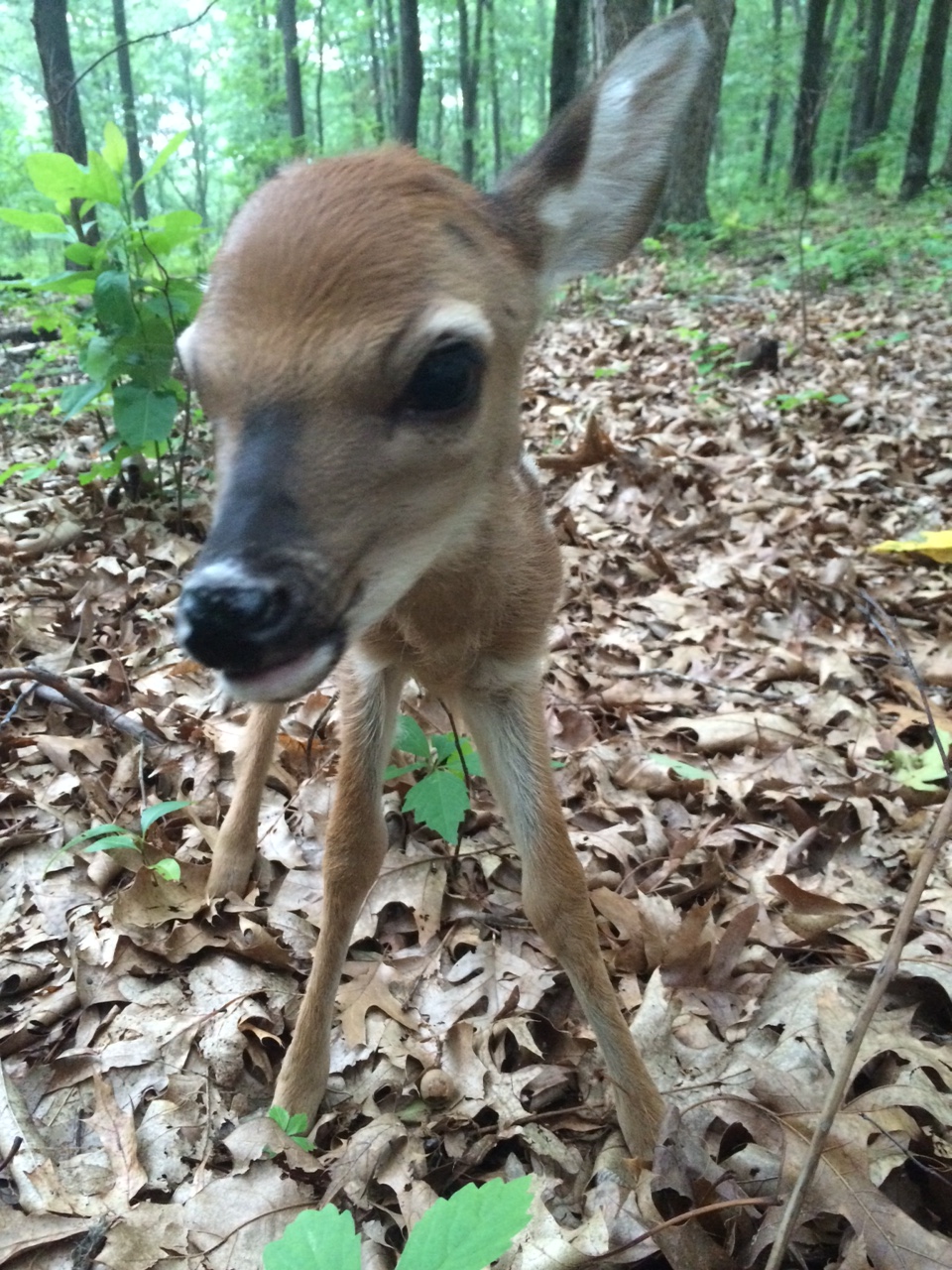Newborn Fawns: What To Do When You Find One
Filed under: Hunting Blog, White-tailed Deer

Intern Nick Halchin found this fawn recently. At this stage in life, fawns aren’t as aware of danger as mature deer and can fall to predators very easily.
Throughout most of the whitetail’s range fawns are being born. Predators, weather conditions, etc., can substantially reduce the odds of fawns surviving. In addition, well-meaning humans often also reduce fawns chances for survival.
New born fawns spend about the first ten days of their life in cover, hidden, and almost motionless. Research shows that they are bedded about 95% of the time during this period. Every spring I hear stories of people finding fawns and carrying them home because they didn’t see a doe. A fawn’s chance of survival almost always decreases significantly if removed from where it was placed by a doe.
Predation that occurs on fawns happens the most during these first few days of their life. Human disturbance to where a doe left a fawn adds scent, etc. and can actually attract predators to the fawn. That’s why it’s extremely important people don’t pick up and remove fawns from their hiding place. The doe is most likely close by and chances of survival rapidly decrease if the fawn is taken out of hiding.
Remember, fawns may seem extremely cute and adorable but they belong in the wild. Never pick up a fawn found in the wild. As conservationists it’s our duty to ensure a healthy life for the fawns, and the best way for us to do so is leaving them alone.
Daydreaming of whitetails,
Adam



